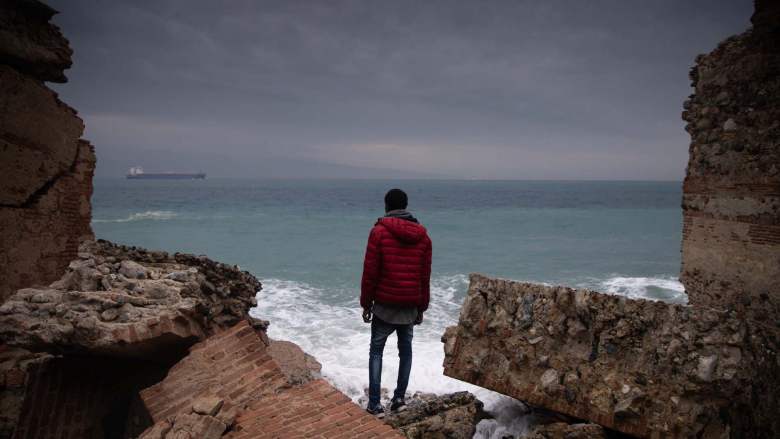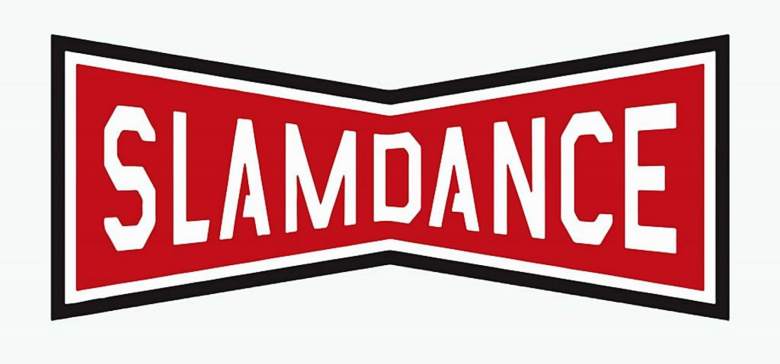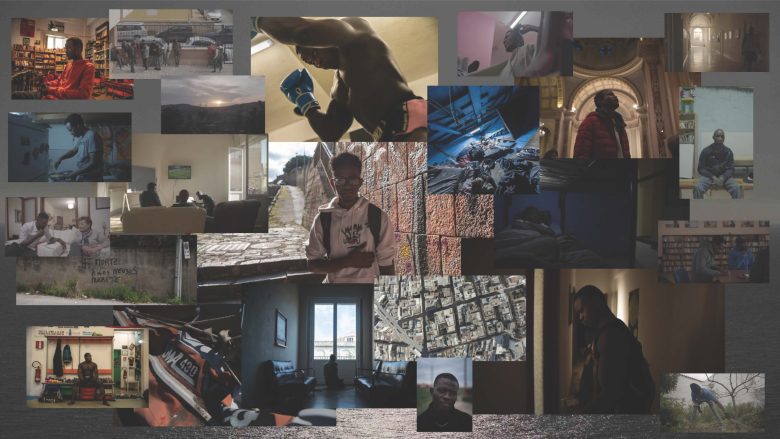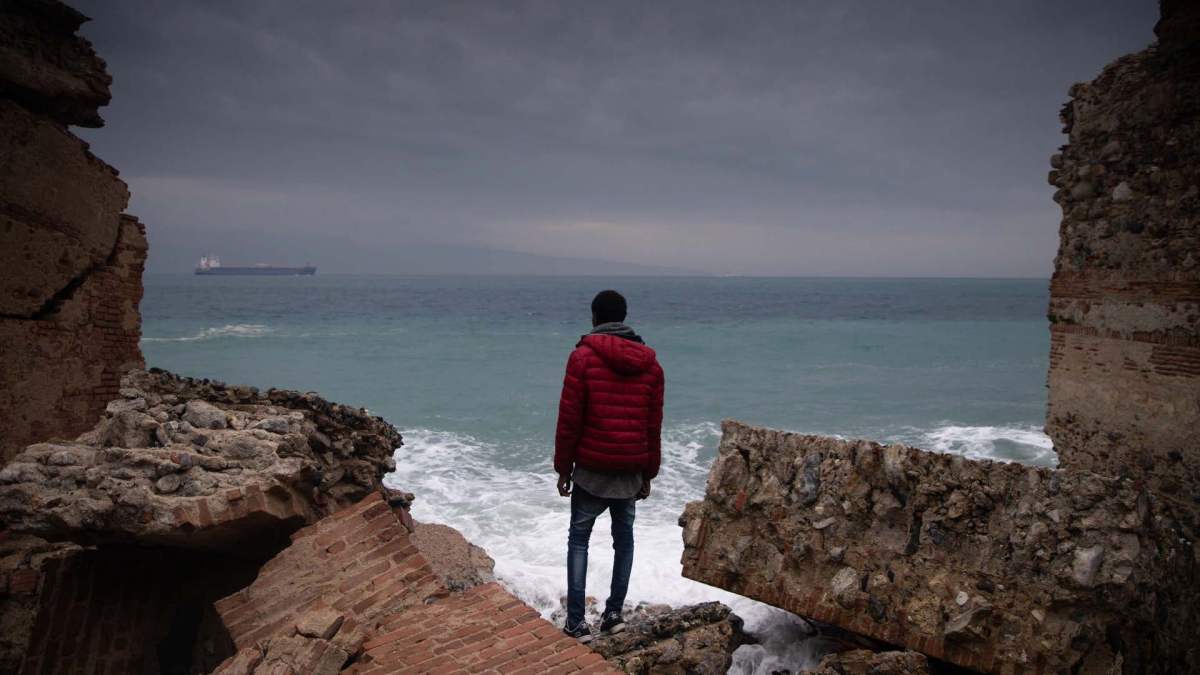
Stephane Grasso’s “Migrant Sea” is a documentary unlike any other.
The project, which focuses on the often-overlooked stories of Sub-Saharan migrants who now live in Italy, is part of the 2024 Slamdance Film Festival’s program called DIG, an acronym for digital, interactive and gaming.
Since DIG is offered only on digital formats, meaning no scheduled screenings, “Migrant Sea” has the potential to reach more people through QR codes on posters and banners that Grasso plans to hang around town.
“This way anyone can visit the website at any time through their phones,” he said. “It’s a web documentary consisting of short films, photo essays and VR and interactive maps.”
Those who would rather just sit on a laptop can also access the project by visiting migrantsea.com.
The idea for telling these migrants’ stories reached back to Grasso’s teen years.
“I’m half Italian and half French, and while I was raised in Canada, I spent a lot of time, months out of every year, in Italy,” he said. “When I was there, I would hear about boats of African migrants who were coming to Italy from northern Africa that were either sinking or being rescued by the Coast Guard.”
The thing Grasso noticed was he only saw the coverage while in Italy.
“That changed in 2014 and 2015, when the media began paying attention to what they called the Mediterranean Migrant Crisis, which basically followed the escalation of the Syrian Civil War, and resulted in 1 million Syrian refugees along with Afghan and Iraqi refugees,” he said. “These refugees crossed to Greece from Syria and Lebanon, but because there was a spike in crossings from North Africa to Italy, the press conflated both migration movements.”

Grasso found that “notable and preoccupying.”
“These were completely different sets of people who had different reasons for their crossings,” he said. “And this was the first time the mass-global population was seeing the crossing from Africa, which had been happening for decades. So, it was very confusing coverage.”
The refugees from Syria and Afghanistan were fleeing conflict, but wanted to go back because those countries were their homes, while those coming from Africa were migrating permanently, Grasso said.
“They were looking for more stability, better wages and better life in Europe,” he said. “Also, the African migrants are called Sub-Saharan migrants, because they come from below the Sahara Desert.”
Crossing the Sahara is a “super-deadly journey” of itself, Grasso said.
“Then they go into super dangerous Libya and do another dangerous crossing of the Mediterranean Sea,” he said.
Grasso not only wanted to show these migrant’s plight, he also wanted to show how diverse they were.
“They come from different countries, and each country has different regions and ethnic groups,” he said.
Grasso was also bothered by how the mainstream media covered these two crossings for another reason.
“The African migrant rescues were covered just because of the sheer amount of what was happening, and they were covered through a European lens in a very dramatic fashion,” he said. “So what happened was they ended up dehumanizing these people, and portrayed them as anonymous, suffering, black migrants.”

Consequently, there wasn’t a lot of coverage that focused on why the African migrants left their countries or what their lives were like living in Italy, Grasso said.
“You didn’t hear their stories from their perspectives, which was important to me,” he said.
By the time Grasso decided to make “Migrant Sea,” he had been making other documentaries for non-governmental organizations (NGOs).
“NGOs, for all their good intentions, tend to focus on fundraising,” he said. “They would ask me to get these stories, package them together and give them the file.”
The more Grasso did that, he realized there needed to be a more collaborative method behind making these videos.
“We couldn’t just tell these migrants’ stories from our perspective, because if you want to tell their stories, you need to work with them,” he said. “You also have to make sure it expresses what they want to express.”
In addition, Grasso wanted to give those he interviewed more agency and portray them as who they are.
“That evolves into more complex stories, which is good, because they are mainly survivors,” he said. “Some of them are extremely driven and made their trips as children. Many of them are more put together than I am and they speak four or five languages.”
The multi-media format for “Migrant Sea” came about because Grasso wanted to make sure these stories were easily accessible to as many people as possible.
“I wanted the doc to be on a website for all times, and I wanted people to not have excuses of accessing the doc,” he said. “They can listen to it while walking down the street. They can watch a video doc. They can experience VR. They can also read articles and first-person essays and access interactive maps.”
The format also helped the migrants effectively tell their stories, according to Grasso.
“If they were intimidated by a camera or wanted to be anonymous, they could do an audio doc,” he said. “If they didn’t mind video but didn’t want cameras hanging around all the time, they could do VR. And they could also write an essay or have photos taken.”
Grasso would also maintain that collaborative aspect during the editing process.
“I would send them edits to get some creative feedback,” he said. “It was all about making them feel seen and heard and keeping the authenticity of their stories.”

